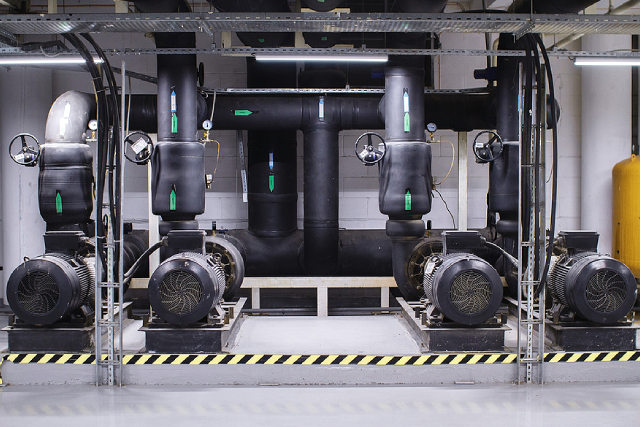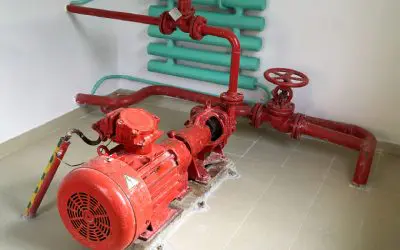
Pumps play a vital role in keeping fluids moving efficiently and reliably in the processes of many modern industries. For many facilities, a pump is simply viewed as a background workhorse and is expected to run well as long as they’re maintained. But in reality, even those that are marketed as high-efficiency pumps degrade over time. Bearings wear down, impellers corrode, and internal surfaces lose their smoothness. This results in reduced output, rising energy costs, and premature mechanical failure. To prevent this slow decline, regular performance testing is essential.
Performance testing is the key to identifying inefficiencies before they evolve into costly issues. It allows operators to spot energy wastage, mechanical wear, and system mismatches early on. Only when facilities ensure their system remains close to its designed performance curve can they prolong its lifespan and secure significant savings in operating costs. Hence, regular testing forms the foundation of a sustainable pumping strategy.
Understanding Pump Efficiency
Pump efficiency measures how effectively a pump converts the mechanical energy supplied by its motor into hydraulic energy that moves the fluid. In other words, it tells you how much of the input energy is actually used for useful work versus how much is wasted as heat, vibration, or noise.
For example, if a pump consumes 10 kW of electrical power but only delivers 7 kW worth of hydraulic energy to the liquid, its efficiency is 70%. The remaining 30% represents energy losses like friction between moving parts, turbulence in fluid flow, or internal leakage. Improving efficiency means reducing these losses, which directly translates into energy savings and better system performance.
Energy losses may not always be visible, but they manifest in various forms such as heat build-up, vibration, or an unusual noise profile. Since the goal of any pump is to move fluid with minimal resistance, these inefficiencies are clear indicators that something within the system is not working as intended.
In financial terms, the cost of an inefficient pump adds up quickly. It consumes more power to achieve the same flow rate, driving up electricity bills. Furthermore, increased wear leads to more frequent maintenance, spare parts replacement, and unexpected downtime. Over time, these inefficiencies can quietly drain thousands of dollars from an organisation’s operating budget.
How to Calculate Pump Efficiency
Pump efficiency (η) is calculated using the formula:
η = (Phyd ÷ Pinput) × 100
Where:
- η = Pump efficiency (percentage)
- Phyd = Hydraulic power output (kW)
- Pinput = Mechanical power input (kW)
Hydraulic power (Phyd) can be determined as:
Phyd = ρ × g × Q × H
Where:
- ρ = Fluid density (kg/m³)
- g = Gravitational acceleration (9.81 m/s²)
- Q = Flow rate (m³/s)
- H = Pump head (m)
This formula allows engineers to measure how effectively a pump transfers energy to the fluid. A decline in efficiency values over time often signals internal wear, blockage, or system imbalance. Regular testing ensures that these problems are detected early and corrected before they cause major disruptions.
The Factors That Influence Pump Efficiency
Pump design affects efficiency first and foremost, but there are several other interrelated factors as well. Broadly speaking, it is the combined result of hydraulic, volumetric, and mechanical efficiencies, each representing a different source of potential energy loss.
1. Hydraulic Efficiency
Hydraulic losses occur due to fluid friction within the impeller and casing. As surfaces wear or coatings deteriorate, flow resistance increases, reducing the amount of hydraulic energy the pump can generate.
2. Volumetric Efficiency
This measures the degree of fluid leakage within the pump. Minor leakages through balancing holes, wear rings, or clearances between impeller vanes and casing can add up, lowering the overall flow rate.
3. Mechanical Efficiency
Mechanical losses arise from friction in moving parts such as bearings, seals, and shafts. Inadequate lubrication, poor alignment, or worn components increase frictional resistance and power consumption.
Maintaining a balance among these factors is key to keeping a pump performing near its design efficiency. Each element can degrade independently, which is why comprehensive testing and not just energy monitoring is so critical.
Measuring and Testing Pump Performance
Testing a pump’s efficiency begins with the performance curve, a chart provided by the manufacturer that indicates expected flow, head, and efficiency across different operating conditions. Comparing actual measurements against this benchmark helps determine whether the pump is performing as intended.
The basic parameters required for testing include:
- Flow rate (Q) – the volume of fluid passing through the pump per unit time
- Head (H) – the height to which the pump can raise the fluid
- Power input (Pinput) – the energy consumed by the pump’s motor
- Specific gravity of the fluid – important for calculating hydraulic power
By measuring these variables and applying the efficiency formula, engineers can quantify performance accurately. If the actual efficiency is significantly lower than the manufacturer’s value, it’s time for further inspection.
Professional resources such as The Hydraulic Institute provide standardised methods and procedures for testing pump efficiency, ensuring consistent and reliable results across industries.
Recognising Red Flags in Pump Performance
Certain signs almost always indicate declining pump efficiency:
- Oversized Pumps: Common in many facilities, oversized units operate far below their optimal load, consuming more energy than necessary.
- Excessive Noise or Vibration: Indicates internal damage or fluid recirculation.
- Temperature Rise: Heat build-up may point to friction or blockage.
- Reduced Flow Rate: Often caused by impeller wear, clogging, or air entrapment.
Ignoring these warning signs will certainly waste energy and, more importantly, shorten the lifespan of expensive equipment. Regular inspections and testing are therefore indispensable parts of pump maintenance.
The Concept of Best Efficiency Point (BEP)
Every pump has a specific operating condition defined by a unique combination of flow rate and head where it performs most efficiently. This is called the Best Efficiency Point (BEP), which is often called the ‘sweet spot’ of a pump’s performance curve. Operating near BEP ensures minimal vibration, balanced radial forces, and smooth fluid flow through the impeller.
At BEP:
- Energy losses due to turbulence and leakage are minimal.
- Mechanical stresses on components are balanced.
- Overall reliability and service life are maximised.
Operating too far from BEP has severe consequences. For every 10% deviation, energy consumption may increase by 2–5%. Below 40% of BEP, efficiency can be cut in half due to fluid recirculation. Additionally, off-BEP operation causes seal and bearing wear, cavitation, and impeller damage, all of which can reduce lifespan by more than 80%.
The Preferred Operating Region (POR)
In practice, maintaining a pump exactly at BEP is rarely possible due to fluctuating system demands. That’s where the Preferred Operating Region (POR) comes in. POR refers to the range around the BEP (typically between 70% and 120% of BEP flow rate) where the pump can run efficiently and safely without undue mechanical stress.
Operating within this region ensures:
- High hydraulic efficiency
- Minimal vibration and shaft deflection
- Prolonged seal and bearing life
In short, while BEP represents the theoretical optimum, POR provides the practical window for daily operations. Staying within this range guarantees that pumps perform reliably and efficiently under real-world conditions.
How to Improve Pump Efficiency
Once performance testing reveals areas of inefficiency, the next step is to implement corrective actions. Here are proven strategies to optimise pump efficiency:
1. Select the Right Pump Size
Oversized pumps are one of the biggest culprits behind wasted energy. Choosing a pump that accurately matches the system’s flow and head requirements helps avoid recirculation, cavitation, and unnecessary energy consumption. When upgrading or replacing equipment, always verify that the pump’s performance curve aligns with the system curve.
2. Conduct Professional Assessments
Consulting pump specialists or mechanical engineers can help identify design inefficiencies and operational flaws. Conducting an energy audit, for instance, can reveal where power is being wasted and how system configurations can be optimised to improve energy performance. These audits often recommend equipment upgrades, flow adjustments, or system redesigns that deliver measurable returns on investment.
3. Implement Variable Speed Drives (VSDs)
VSDs allow operators to adjust pump speed according to real-time demand. This not only helps maintain operation near the BEP but can also cut energy usage by 30–50% in variable-load systems. Slowing oversized pumps through VSDs significantly improves both efficiency and lifespan.
4. Optimise System Design
Pipe friction losses are often overlooked but can have a large impact on performance. Minimising bends, restrictions, and unnecessary valves reduces resistance. It’s also advisable to recheck pipe sizing after any system modification to ensure that flow dynamics remain optimal.
5. Monitor Continuously
Long-term efficiency requires continuous tracking. Install flow meters, pressure gauges, and power monitors to observe system performance in real time. By comparing live data with the pump’s original performance curve, you can detect degradation early and schedule predictive maintenance before costly failures occur.
Conclusion
Pump efficiency is a reflection of operational discipline and energy responsibility. Regular testing ensures that your system operates near its design potential, saving energy, reducing wear, and extending lifespan.
By understanding performance parameters, identifying deviations early, and applying corrective strategies such as system optimisation and continuous monitoring, organisations can dramatically enhance the performance and reliability of their pumping systems. Ultimately, a well-tested, well-maintained pump isn’t just more efficient, it’s a cornerstone of smarter, more sustainable operations.



